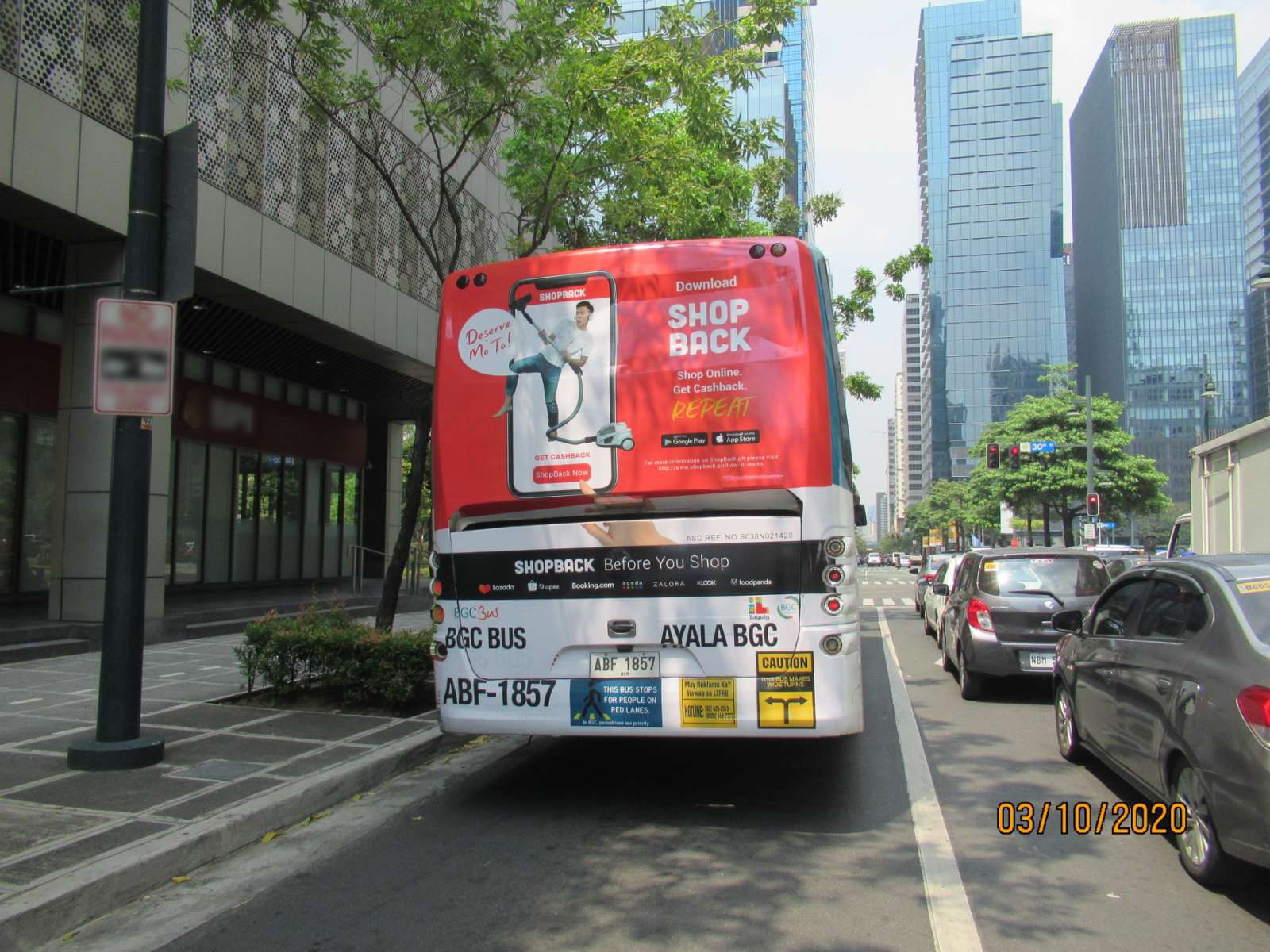Discovering the Impact and Performance of Transit Advertising in Urban Advertising And Marketing Strategies
Transportation advertising has become a substantial part of city marketing strategies, maximizing the unique dynamics of public transport settings. Its capacity to get to a diverse and broad audience provides brand names with a chance to develop purposeful links with regular visibility. Nonetheless, with the rapid advancement of technology and changing customer behaviors, the landscape of transportation marketing is going through significant modifications that merit closer exam. What ramifications do these trends hold for marketing professionals seeking to harness the complete possibility of this medium?
The Increase of Transit Advertising And Marketing
As urban populaces remain to swell, the demand for ingenious marketing services has brought about the increase of transportation marketing as a pivotal element of urban advertising and marketing strategies. This kind of advertising leverages public transport systems-- such as trains, trains, and buses-- to get to a varied audience in densely inhabited areas. The efficiency of transportation advertising depends on its ability to engage consumers during their daily commutes, a frequently forgotten yet critical time for brand messaging.
With cities ending up being increasingly stuffed, conventional marketing spaces are ending up being scarce and less efficient. Transportation marketing provides a dynamic option, enabling brands to showcase their messages in high-traffic areas where potential consumers are regularly exposed to the ads. Furthermore, as urban locals increasingly count on mass transit, the relevance and presence of transit marketing have grown dramatically.
Furthermore, technological innovations have actually enhanced the sophistication of transit advertising, permitting for digital displays and interactive campaigns that can capture customer focus extra successfully than fixed ads. As a result, transit marketing is not just a cost-effective choice but also a necessary strategy for brand names looking for to get in touch with metropolitan customers in an impactful and unforgettable manner.
Key Benefits of Transit Marketing
The performance of transportation marketing is highlighted by its complex benefits, making it a vital device for metropolitan marketers. Among the key advantages is its comprehensive reach; transportation systems offer numerous travelers daily, enabling brands to get in touch with a diverse audience in high-traffic environments. This visibility enhances brand name understanding, ensuring that promotions are seen repetitively by travelers.

Furthermore, transit advertising is economical compared to other media, using a lower cost per impact while maintaining high exposure. The flexibility of advertisement styles, from bus covers to electronic screens, enables for impactful and imaginative projects that can adjust to altering market requirements.
Customer Behavior Insights
A considerable section of customer habits is influenced by the prevalent nature of transportation advertising and marketing in metropolitan environments. This type of advertising and marketing captures the focus of varied demographics, involving customers throughout their everyday additional hints commutes.
Study suggests that transportation advertising can stimulate emotional feedbacks, bring about enhanced brand name affinity. Consumers usually connect the experience of commuting with details brands, developing a long lasting impression that influences investing in decisions. Moreover, the regularity of exposure to transportation advertisements fosters familiarity, which is a vital consider consumer trust and loyalty.

Furthermore, the public facet of public transport adds to this sensation; as people share rooms, they are more probable to review and advise brands they come across. Therefore, transportation advertising not just gets to customers yet additionally promotes social interactions that enhance brand messaging. Comprehending these behavior insights allows online marketers to customize their strategies properly, making sure that their campaigns reverberate with target audiences in the metropolitan landscape.
Case Researches and Success Stories
Successful application of transit marketing methods is exhibited via various instance researches that highlight its effectiveness in city advertising. One noteworthy example is the partnership between a preferred beverage company and a significant city's public transportation system. The campaign made use of bus wraps and interior posters, leading to a 30% rise in brand name recognition and a 15% increase in sales within the target demographic over 3 months.
One more successful case included a local dining establishment chain that employed train station marketing to draw in travelers. By producing visually striking advertisements that offered timed promotions, the restaurant experienced an uptick in foot web traffic, with an excellent 25% boost in lunch hour customers.
Additionally, a city's tourism board introduced a transportation campaign showcasing neighborhood destinations through bus stop displays and train advertisements. The campaign led to a substantial increase in tourist brows through, as reported by a 40% rise in inquiries at visitor facilities.
These study highlight the versatility and possibility of transportation advertising to engage city target markets effectively, demonstrating that strategic positionings can produce significant rois and boost brand presence in bustling urban atmospheres. - Transit Advertising Philippines
Future Fads en route Advertising And Marketing
As city landscapes proceed to evolve, so too does the realm of transportation advertising and marketing, which is positioned to embrace innovative innovations and techniques. One significant trend is the combination of electronic marketing displays into public transportation systems. These dynamic screens enable for real-time updates and targeted material, boosting audience interaction. Moreover, the click reference adoption of programmatic advertising and marketing is expected to gain momentum, enabling marketers to utilize information analytics for even more specific audience targeting based upon time, place, and demographic insights.
One more emerging pattern is using enhanced reality (AR) and digital reality (VIRTUAL REALITY) experiences within transit advertising. These immersive innovations can mesmerize travelers, changing ordinary trips right into interactive brand name experiences. In addition, sustainability is ending up being increasingly essential; eco-friendly advertising and marketing products and practices are likely to obtain grip, reflecting the expanding consumer need for company social obligation.
Last but not least, the increase of mobile connectivity will certainly help with greater combination in between transportation marketing and personal devices. Marketers can produce smooth cross-channel experiences, enabling instant communication and involvement with potential consumers. Jointly, these trends show a transformative future for transportation marketing, providing new opportunities for brand names to get in touch with metropolitan audiences.
Final Thought
Transit advertising has established itself as a considerable component of urban marketing methods, demonstrating significant effectiveness with improved brand name presence and consumer engagement. The capability to adapt messages to specific demographics, combined with the ingenious usage of technology, positions transportation advertising and marketing as a driving force in modern marketing (Transit website here Advertising Philippines). As city settings continue to advance, the future of transit advertising and marketing promises additional advancements, ensuring its significance and impact fit customer assumptions and actions in metropolitan landscapes
As city populaces continue to swell, the need for ingenious advertising services has led to the surge of transportation advertising and marketing as a critical element of metropolitan advertising techniques.A substantial section of customer actions is affected by the prevalent nature of transit marketing in urban environments. Collectively, these fads show a transformative future for transportation advertising, using new methods for brand names to connect with metropolitan audiences.
Transportation marketing has developed itself as a substantial element of city advertising and marketing approaches, demonstrating significant performance with boosted brand name presence and consumer involvement. As urban atmospheres continue to progress, the future of transportation advertising assures more improvements, ensuring its relevance and impact in shaping consumer understandings and actions in metropolitan landscapes.